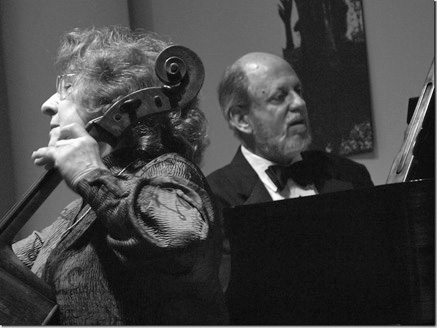Arts at Tenri presents
Friday, January 16, 2009, 7:30
pm
Members of the Tenri Chamber Ensemble
Albert Lotto, piano
Joseph d'Auguste, clarinet
Barbara Stein Mallow, cello

A program of Trios for Clarinet, Violoncello and
Piano
Ludwig van Beethoven 1770-1827
Trio in B-flat Major, Op. 11, 1798
After the string quartet, the most prominent ensemble in the chamber music
repertoire is the piano trio comprising the intimate but powerful combination
of piano, cello and violin. Haydn established the genre with numerous
outstanding trios, inaugurating a tradition that has engaged nearly every
notable composer from Mozart to such contemporaries as John Harbison and
Bright Sheng.
Max Bruch
From Eight Pieces for Clarinet, Violoncello and Piano
Max Bruch is remembered today chiefly for his concertos and concerto-like
compositions, particularly the G Minor Concerto and Scottish Fantasy for
violin and orchestra as well as the Kol Nidrei variations for cello and
orchestra. Among his chamber works are string quartets, quintets and an
octet, as well as the Eight Pieces, Op. 83. Wilhelm Altmann, the famous
chamber music authority, has written that Bruch's chamber works "are
one and all distinguished by beauty of tone and musical architecture."
Further, concerning the Op. 83 Eight Pieces, he enthuses: "How nobly
inspired are the melodies that he produced this late in life; how mature
his development of them and how effective his handling of each individual
instrument."
Johannes Brahms, opus 114 (Second Edition-1891)
Trio Number Five in A Minor for Piano, Clarinet and Violoncello
Mozart, in his last years, became acquainted with the brilliant artistry
of the clarinetist Anton Stadler, and composed for him a matchless concerto
(K. 622) and two chamber music masterworks: the Clarinet Quintet, K. 581,
and the Trio for Clarinet, Viola and Piano, K. 498. Brahms had a similar
experience late in his life, when his attention was called to the playing
of Richard Mühlfeld, the principal clarinetist of the Meiningen Orchestra.
With all his symphonies and concertos behind him, Brahms had composed
nothing in more than a year, and had in fact just completed the details
of his will, when the conductor Fritz Steinbach arranged for Mühlfeld
to play for him in March 1891. He had never written for the clarinet in
his chamber music, but his reaction to Mühlfeld was an immediate
restoration of his creative drive and by the end of that year, in Berlin,
the clarinetist gave the premieres of the first two works Brahms composed
for him: the Trio we hear this evening and the more celebrated Quintet
for Clarinet and Strings, Op. 115. Brahms himself was at the piano in
the premiere of the Trio; Mühlfeld was partnered by the Joachim Quartet
in the Quintet. Three years later came the two sonatas for clarinet and
piano Op. 120, the last Brahms composed for any instruments.
*Program is subject to change
The Place
Tenri Cultural Institute
43A West 13th Street, New York, NY
(212) 645-2800
Tickets
 $25 general, $20 students
$25 general, $20 students